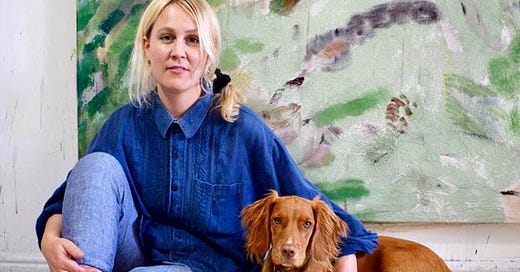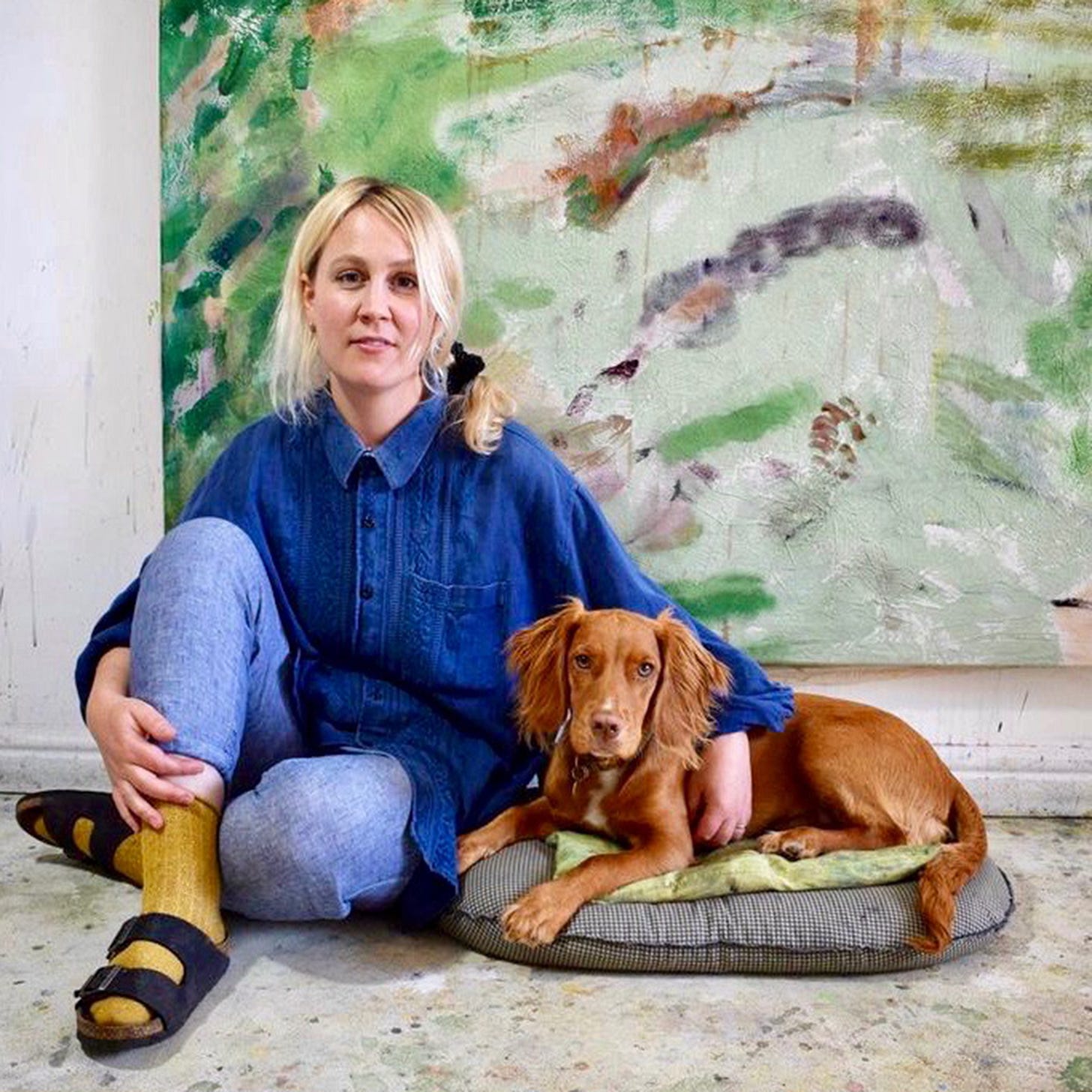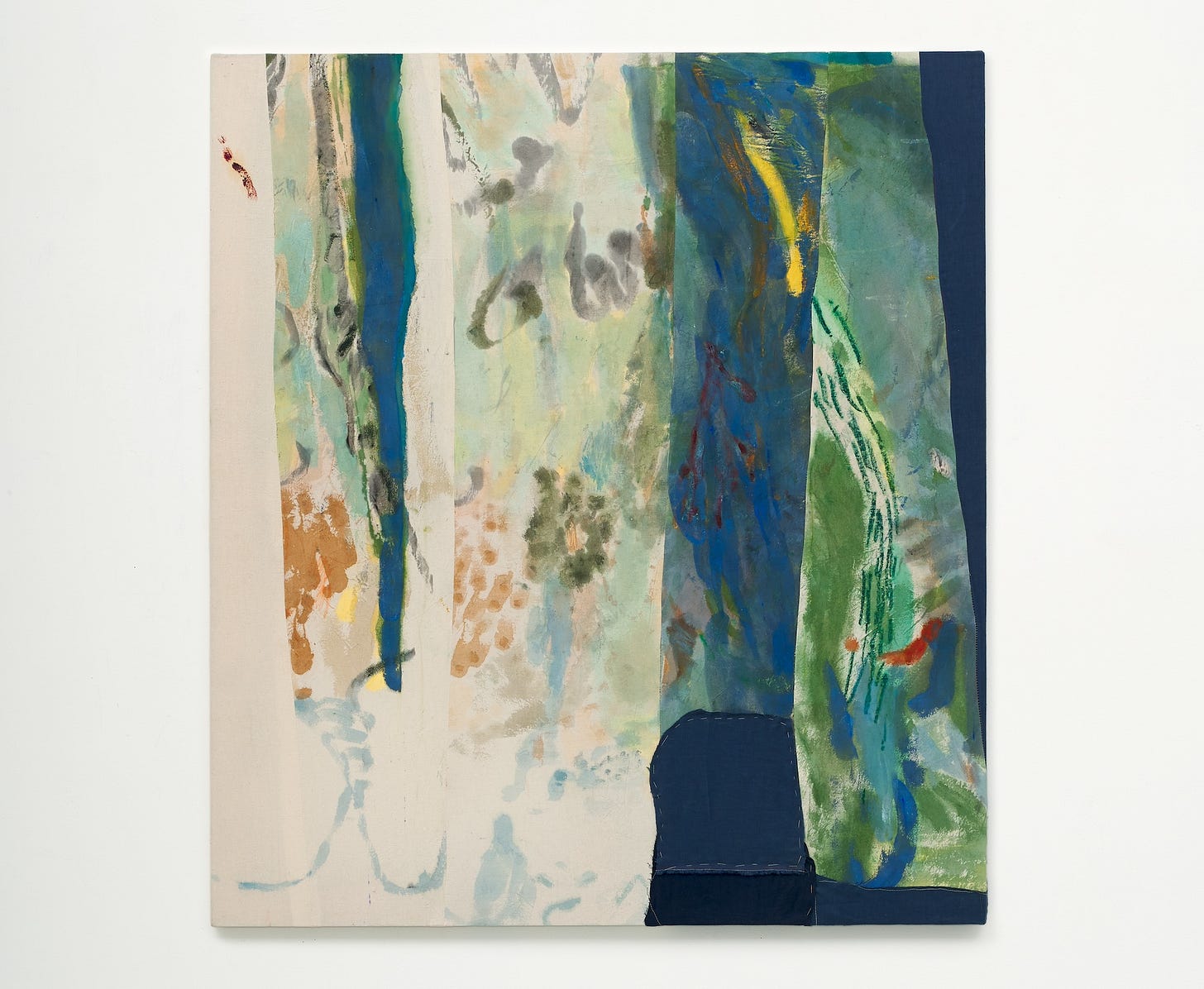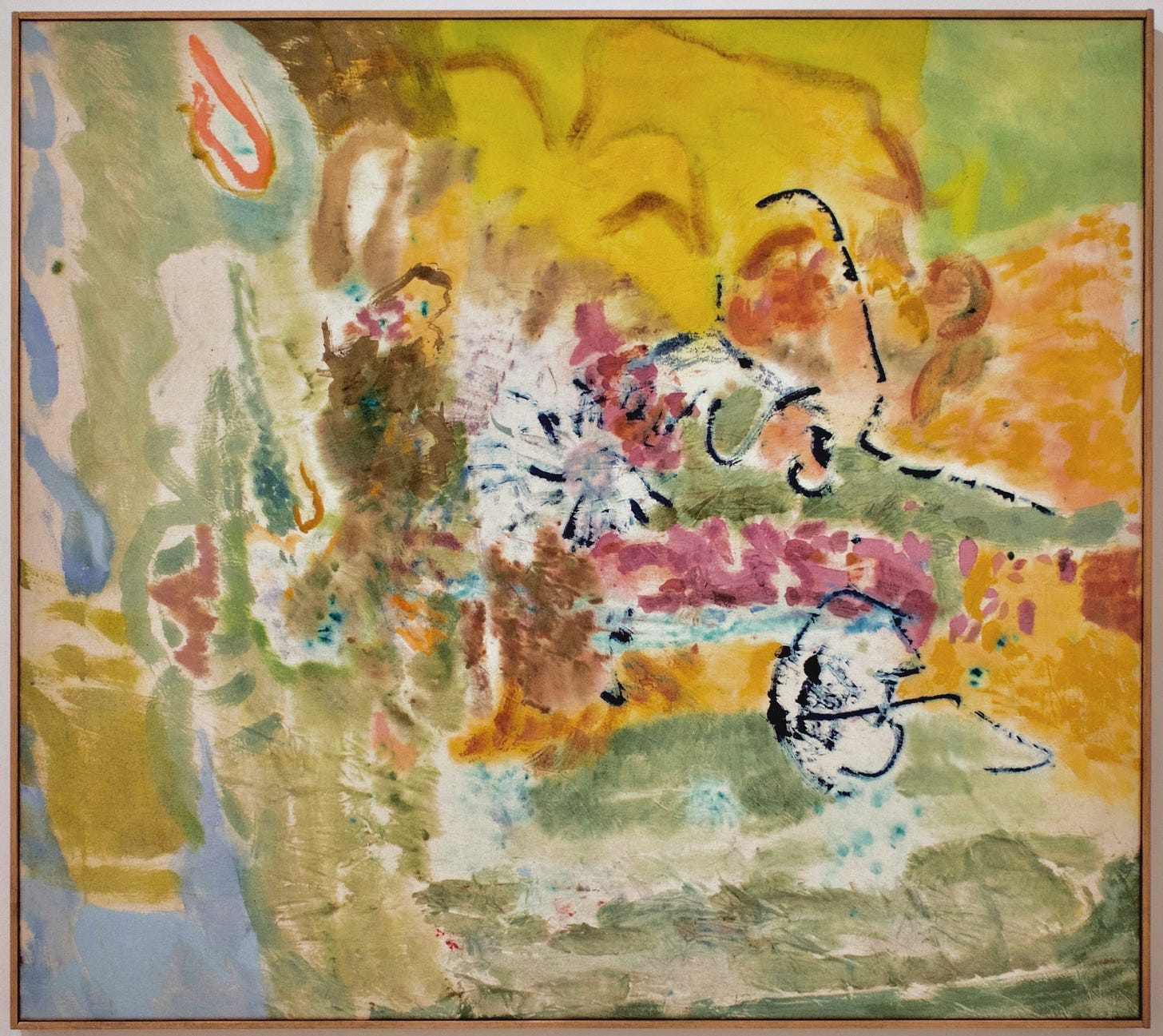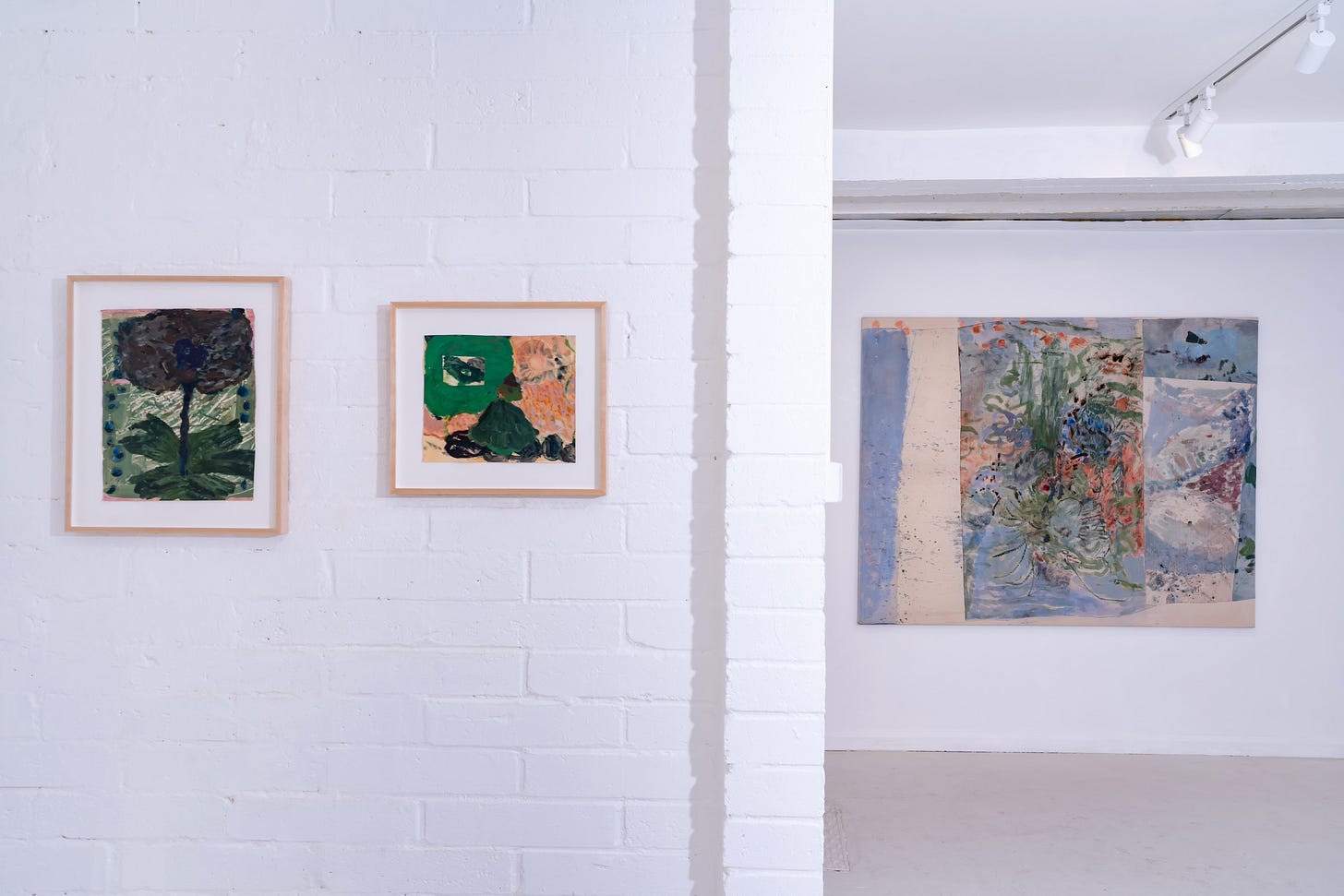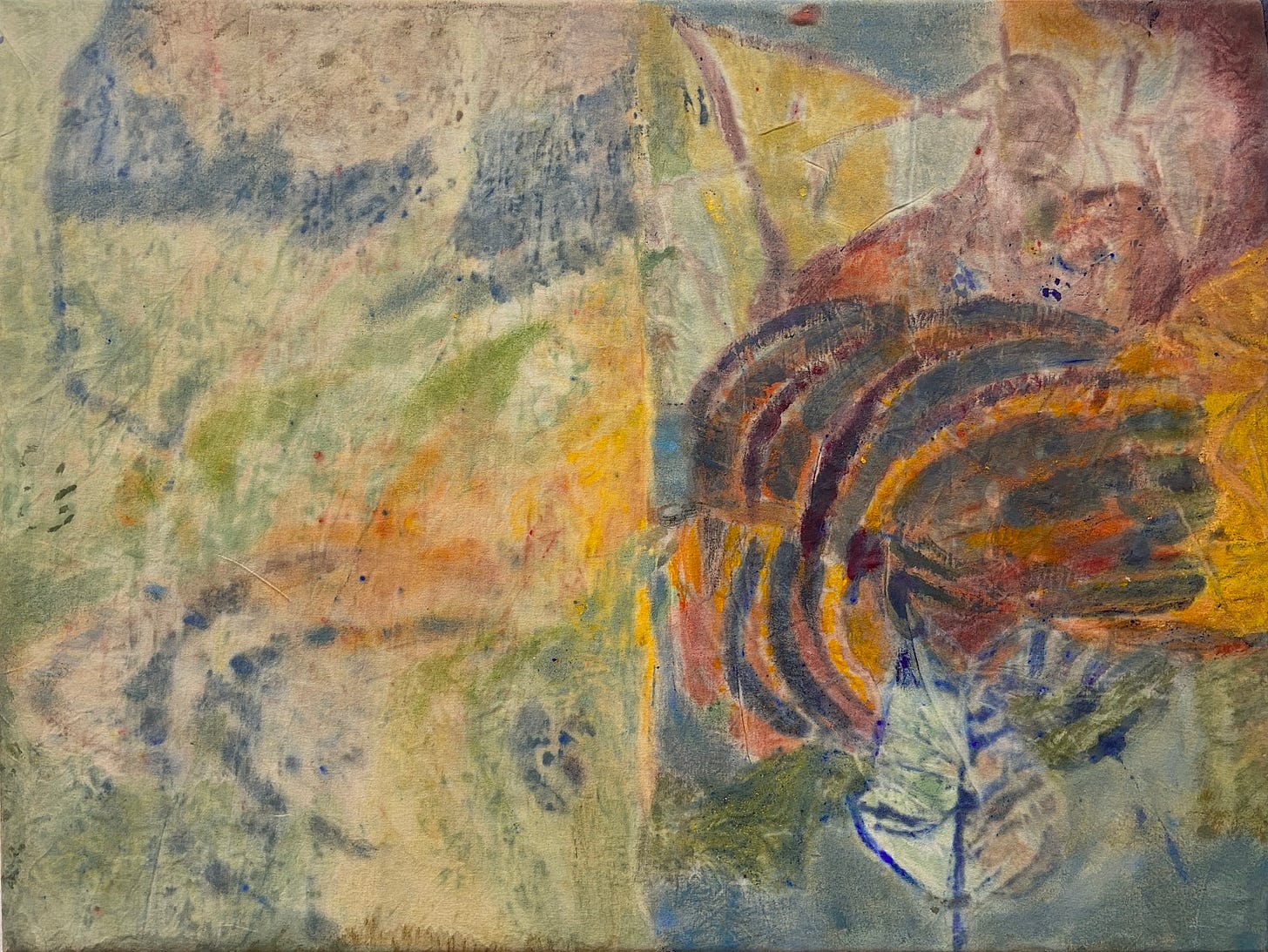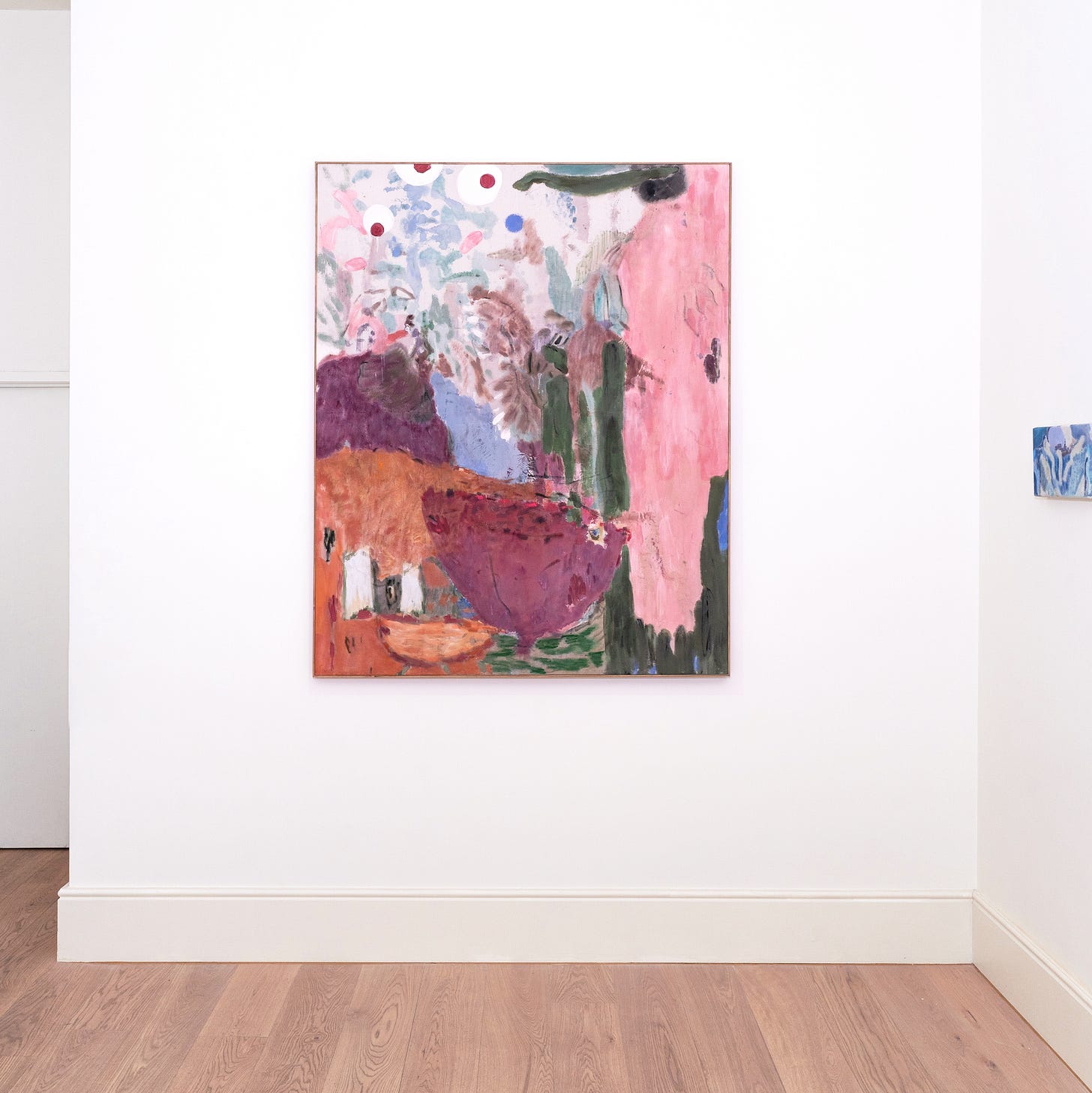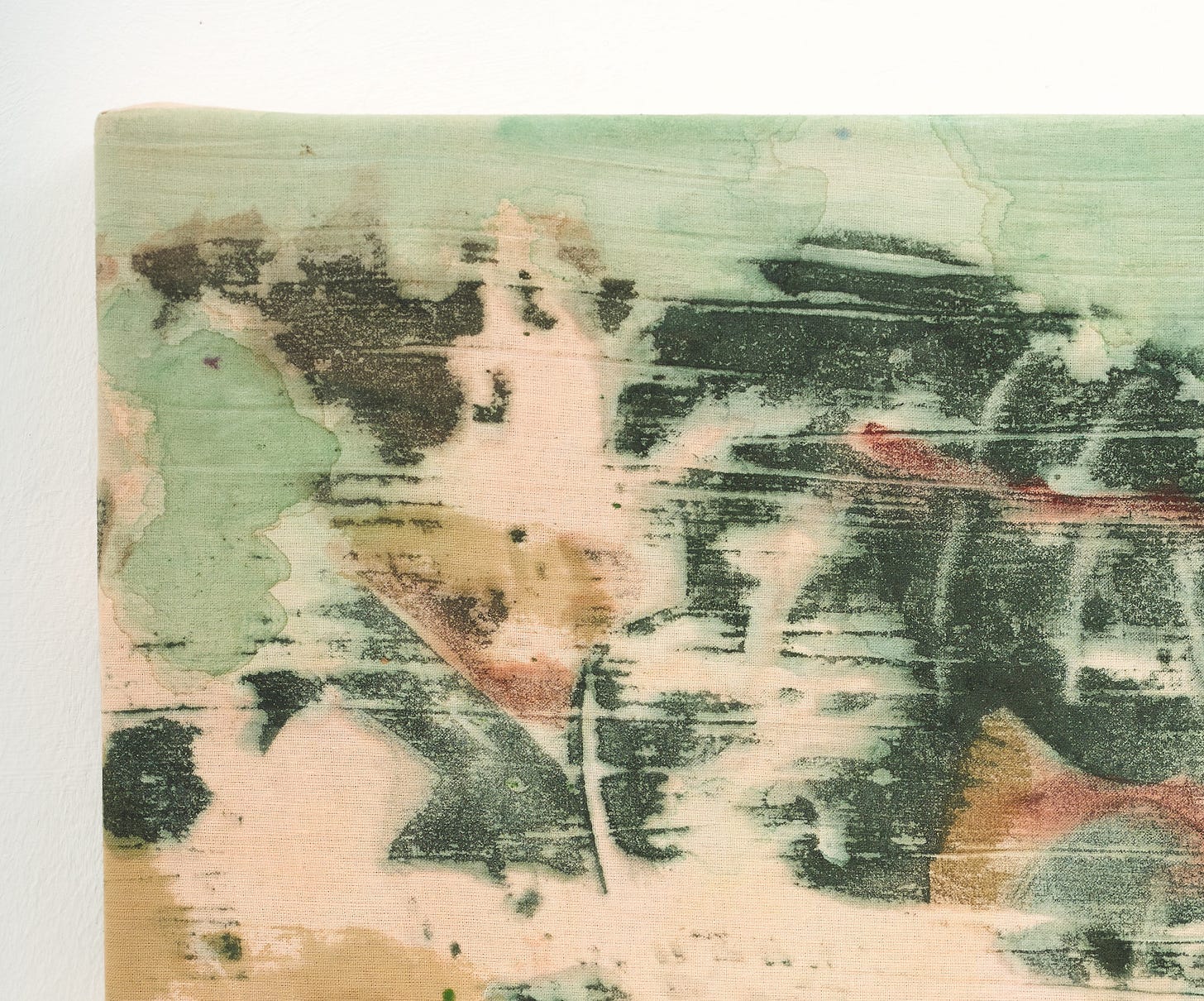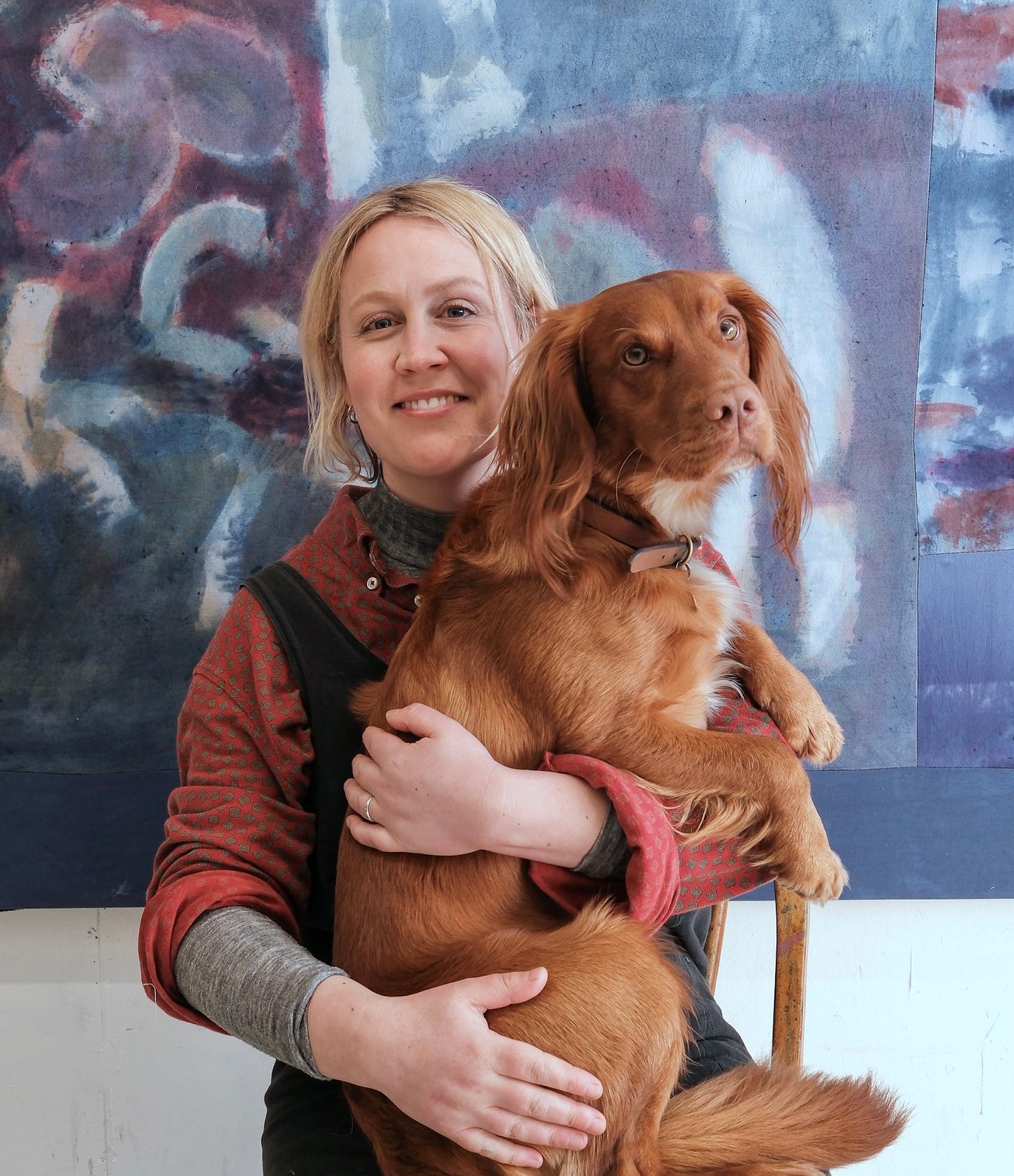Experience the Wonderfully Fluid Paintings of Alice Neave
Whenever Alice Neave’s paintings pop up in my Instagram feed they stop me in my tracks. I find myself studying them closely. What I love about her paintings is how fluid they are, how washes of colour bleed into the surface, how layers of paint vibrate as they interact, and I particularly love her carefully considered colour palette of naturalistic tones.
I noticed early on that Alice wasn’t working with traditional oil/acrylic and canvas. She lists her materials as raw pigment, binder, fabric dye, thread and cotton. I also noticed she was sewing separate pieces of fabric together, which especially intrigued me as an artist myself who leans into collage techniques. The total effect of whatever process Alice had found was something magical, her works reeling me in with their gorgeously ambiguous and painterly aesthetic.
I sensed an openness in Alice’s work: to discovering her own ways of working, to letting her experiments with paint - or rather, fabric dye - lead her in new directions. I think that’s partly what makes her paintings so unique, the product of deep experimentation and play in the studio. I also sensed that there was much more to discover behind her work, so I asked Alice if she’d be up for going a little deeper into it.
Hey Alice. When I first saw your work I was intrigued by the washes of paint, but I didn’t think they were watercolours exactly. Can you tell me how you achieve that unique fluid look? And what do you love about using fabric dye and raw pigments?
My process has evolved into something that resembles a scientific experiment more so than painting. I started working with fabric around 2020 and I’ve slowly been figuring it out. I was really after that watercolour look but on a large scale. Using everything from acrylic to oil at first, the latter not archival on unprimed fabric, so that was an impetus to look around for a different solution. I made my own batches of watercolour with pigments and gum arabic. Then I experimented with using fish glue and pigments with a mono-printing process. But I was struggling to find the real depth of colour and vibrancy that I was after.
I resisted fabric dye for a long time as I didn’t think I could make the marks and be as painterly with it as I desired. But after much research I discovered natural resists as well as an algae compound to help thicken the dye and all sorts of other ways to help create the gestural painting I didn't want to lose, and I’m finding my way forwards.
Is it a trickier process, using fabric and fabric dye?
One needs to have a lot of patience between layers and some might say it would be easier to just work with a traditional primed canvas, but there’s something about the malleability and softness of fabric that’s captured my attention and curiosity. Practically, it’s important for me to be able to patchwork pieces together - collaging elements helps in creating a kind of ambiguous storytelling.
Conceptually one can’t ignore the marginalisation of Textile Art in the past due to its links to domesticity and femininity. It is having a resurgence at the moment and I can see why, when you look at the world and this moment in time politically. Using textiles and fabric to reclaim the narrative and challenge those patriarchal structures has been important to me in my own life, and the contrarian in me relishes working with a material that hasn't always been seen as 'valuable'.
I noticed some hints of nature in the titles, and I was wondering if you saw your work as abstracting nature? And what lies behind that influence?
I would say my work is very much informed by nature but less so in an observational way, more so in an experiential way. And this in turn is abstracting nature, for sure. I don’t work plein air or even from photos, I just try to get out to the countryside as often as possible and really enjoy it and ingest it in a holistic way. Then that comes out in the studio, jumbled from the many impressions of that place and mixed in with emotion and memory to make something that may be universally resonant to someone that may not know that landscape at all. That’s definitely one of my goals when starting a work.
With regards to place specifically, my husband's family has a farm in Pembrokeshire on the west coast of Wales that we try to visit every few months when we get the itch to get out of London. We’re incredibly lucky to have this refuge and there’s something very beautiful about coming to really know and love a place over many years that isn’t your home. The countryside there is extremely unspoilt with lovely people, a dramatic coastline and ancient woodland. It really is my happy place and where so much of my imagery has emerged from.
I was curious if you ever get into battles with your works, and how you deal with those moments, whether you power through or step back and give yourself headspace?
Oh yes, 100%! I haven’t chosen an easy medium, it’s incredibly delicate, very easy to overwork and ruin and it requires patience and a lot of thought ahead of time, which is a real challenge for me. I automatically want to work quickly, messily and intuitively. However combining these two sides of my brain, the intuitive and the methodical has kept me challenged and continually interested in what I'm doing.
In my studio it feels like a lot of ‘trying’ and when it comes together it’s great. Every artist knows that feeling but it’s rarely easy. The process of making my paintings is fragile in their coming together, however I love that you can see the fragility and the many ways I’ve approached making them in the finished work. The artist’s hand is there for all to see. With regards to the second half of your question the answer is both, I trust my gut and do what feels right at the time.
It seems like you consider colour extremely carefully. What goes into those decisions, and is it ever stressful mixing colours to a point where you’re happy and they fit a certain tone you're after?
I do consider it carefully. Although with regards to mixing colour, dyes are incredibly difficult as they’re always slightly altered when dry, so it’s a lot of guesstimating and praying that it will work. There’s definitely more hope than accuracy going on in my studio!
As for my colour choices, I can see clearly where my colour combinations and palette comes from when I look at my environment growing up. From my respective parent's houses and their taste, to the Dorset countryside where I grew up and the art my Grandmother made, it all adds up. She was a painter but was also very creative with textiles. She grew up in Paraguay where they have a rich history of Textile Art, including the cotton lace called Ñandutí, which means "spider web" in Guarani. My sister and I have Ñandutí in our homes as well as cushion covers made by her using screen-printing and embroidery. My grandmother's palette and mine is similar no doubt. I’ve also noticed my palette changes according to what I’ve been immersed with at the time, the change in seasons and where I’ve been. I really like that seasonality and reflection of the ever shifting natural world that is mirrored in my work.
Your work also feels very confident, and I was curious if that’s how you feel or if you ever deal with self-doubt when working?
I am confident when it comes to scale. I’ve always found working big the most fun and it feels the most natural way of making to me. Small works are fascinating in a whole other way. It’s the middle sized works I find very hard and constraining, like I can't fit my idea into those dimensions.
I do struggle with self doubt and dissatisfaction and have fallow periods just like I know many others do; I have many books on this subject! My husband witnesses the hard times and is great at the pep talks. When it's not going well it affects your mood, your confidence, self worth and all the rest of it and when you have a good day or finish a work all the hardship is forgotten and you think you're a genius! Not to dredge up the old suffering artist trope but we are difficult to live with and he is the most patient man.
I very much advocate physical breaks away from the studio and filling your cup with other things. But sometimes it's just a matter of hard work and pushing through! Resilience and patience are the main prerequisites for this way of life.
I have to ask about your dog, who looks like a great little studio assistant. What’s his/her name?
My dog Brockley is named after our first home in South east London and is definitely the love of my life. He’s a very good boy and a reassuring studio companion. He’s been coming to the studio since he was a small pup so we have a routine now. As long as he has a couple of good walks he sleeps the rest of the day and stays out of the way. He seems to understand I'm doing something important.
Lastly, any shows you want to plug?
I’m having some early conversations with some galleries that I admire at the moment, so I’m looking forward to seeing what comes from those. Otherwise I’m working towards making work for a show/residency with Studio Ashby in the Autumn at their space, Blewcoat in Central London. At the moment I’m looking forward to not having a lot of deadlines and just letting the work evolve at its own pace. I’m being careful to protect that at the moment.
Follow Alice on Instagram: @aliceneave_art
The Best Painting Shows in London This Month
Rose Wylie at David Zwirner (ends 23 May)
James Cabaniuk at Workplace (ends 3 May)
Oliver Lee Jackson at Lisson (ends 17 May)
Kentaro Okumara at Vardaxoglou Gallery (ends 17 May)
Sim Smith have an exciting group show (ends this weekend!)
Thanks for reading, see you next time!
Oliver & Kezia xx
Palette Talk is free and we hope to grow with your support. If you’ve enjoyed reading, drop us a donation via PayPal…


